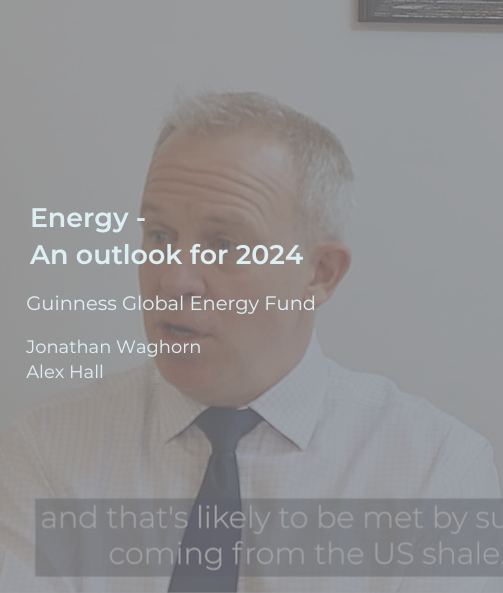Alex HallJonathan, can you give me an outlook for energy for 2024?
Jonathan WaghornSure. Let's give a kind of a brief summary, first of all. So we've had a lot of COVID related disruption the last few years and this year, 2024 brings normalisation, I think to that. Global oil demand probably the order of about a million barrels a day, and that's likely to be met by supply coming from the US shale still, Guyana, Brazil and Canada as well, meaning OPEC production is unlikely to grow meaningfully in 2024.
OPEC will look to keep oil prices around $80 a barrel if they can, without destabilising the global economy and we believe they can do that. We see the equities today pricing in about $65 a barrel.
So there's some of the key points and if we just dig into some of that in terms of demand, so certainly less COVID affected this time around. The IEA forecasting 1.1 million barrels a day of oil demand growth to 102.8 million barrels a day this year. That's still driven very much by the non OECD. The OECD demand will actually be down this year.
China being by far and away the most dominant, India a very distant second. And that's even with electric vehicles approaching 20% of sales penetration this year. We then continue to see oil demand growing until around 2030, peaking somewhere in the sort of 105 and 110 million barrel a day level.
So that's demand. If we think then of supply, think about OPEC supply, think about non OPEC supply. OPEC still clearly being very flexible in 2024, adjusting their production, attempting to put a soft floor under the oil price We think that's something in the order of about $80 a barrel without, as I mentioned, destabilising the global economy. But it's important $80 a barrel is cheap for oil in the world economy at the current time versus historic levels. Non-OPEC also will continue to grow. So slower growth from the US shale, more likely to be 0. 4 million barrels a day versus 2023. So that's improving capital efficiency and that's probably coming ahead of supply growth from the shale producers, non OPEC outside the US then continues to grow. So that's Brazil. Guyana and Canada coming through. So that will put pressure on OPEC to toe the line, hit their output targets especially in the first half of the year to keep the market slightly undersupplied. It's going to be tougher in the first half than it is in the second-half.
For natural gas, we should mention a few comments, their international prices somewhere in the range we think of $10 to $14 per mcf. That should be enough to incentivise new US and Qatari LNG that will start to come on really from 2025. So another year or so to go before that starts to impact. That will then help Europe offset its Russian imports that it would otherwise have been taking.
Think about then the equities I guess despite the strength of the energy sector in 2023, energy equity valuations still do very much remain attractive. We're now looking at the MSCI World Energy Index trading on a price to book of about 1.7 times. The S&P 500 is on 4.5. So the relative there is still more than two standard deviations below the long term relationship. We continue to see capital discipline being favoured over organic growth. So that's very high levels of free cash flow yield. Our portfolio in 2024 at $80 Brent, we think is an 11% free cash flow yield.
So energy equities as far as we can see offer a good upside if the oil price view that we have, the profitability, and the free cash flow plays out the way that we think. We would say energy equities discounting an oil price of around $65 a barrel at the current time. Now, if we're right in our long term price of 80 and the market were to pay for that, then that would certainly imply 30 to 35% upside across the energy complex.


